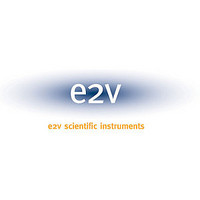AT86RF211SDK E2V, AT86RF211SDK Datasheet - Page 16

AT86RF211SDK
Manufacturer Part Number
AT86RF211SDK
Description
KIT DEV FOR AT86RF211/915MHZ
Manufacturer
E2V
Series
Smart RFr
Type
Transceiverr
Datasheet
1.AT86RF211SDK.pdf
(66 pages)
Specifications of AT86RF211SDK
Frequency
915MHz
For Use With/related Products
AT86RF211 @ 915MHz
Lead Free Status / RoHS Status
Contains lead / RoHS non-compliant
Other names
AT86RF211-DK
AT86RF211-DK915107
AT86RF211DK
AT86RF211DK915107
AT86RF211DK915107
AT86RF211-DK915107
AT86RF211DK
AT86RF211DK915107
AT86RF211DK915107
- Current page: 16 of 66
- Download datasheet (564Kb)
2.2.5
2.2.6
16
AT86RF211S
IF1 filtering
IF1 Gain and Second Mixer
Figure 2-7.
Figure 2-8.
The first mixer translates the input RF signal down to 10.7 or 21.4 MHz, depending on
which of these two IF1 frequencies has been selected.
The local oscillator is provided by the same synthesizer that generates a local frequency
10.7 or 21.4 MHz away from the Tx carrier frequency.
The output impedance of the mixer is 330Ω with a 20% accuracy, so that low-cost, stan-
dard 10.7 MHz ceramic filters can be directly driven. Other IFs may be chosen thanks to
the mixer’s high bandwidth (50 MHz).
A popular ceramic filter is used to reject the second image frequency and provide a first
level of filtering.
The IF1 filter can be removed however; it leads to a sensitivity reduction of about 3 dB
(the substitution coupling capacitor should be greater than 100 pF).
The input impedance of the IF1 amplifier is naturally 330Ω to match the input filter. The
voltage gain, that is the gain at 10.7 or 21.4 MHz added to the conversion gain at 455
kHz, is typically 14 dB when loaded with 1700Ω. The second mixer operates at a fixed
LO frequency of 10.245, 10.25 or 20.945 MHz. Its output impedance is 1700Ω in parallel
to 20 pF.
Schematic Input of the LNA
Schematic Output of the Mixer
RXIN
IF1OUT
5348B–WIRE–03/06
Related parts for AT86RF211SDK
Image
Part Number
Description
Manufacturer
Datasheet
Request
R

Part Number:
Description:
IC PCI BRIDGE MEM CTRLR 503PBGA
Manufacturer:
E2V
Datasheet:

Part Number:
Description:
IC RF TXRX FSK 400-950MHZ 48TQFP
Manufacturer:
E2V
Datasheet:

Part Number:
Description:
Demultiplexer 240-Pin EBGA
Manufacturer:
E2V
Datasheet:

Part Number:
Description:
Manufacturer:
E2V
Datasheet:










